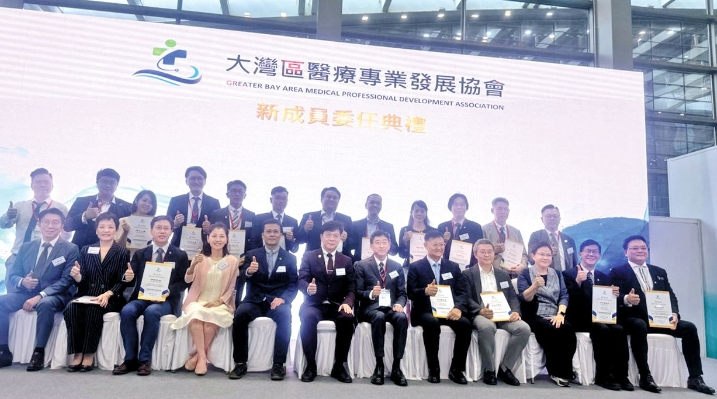The recent opening of the Shenzhong (Shenzhen-Zhongshan) Link and the increased frequency of high-speed trains connecting cities within the Guangdong-Hong Kong-Macao Greater Bay Area (GBA) have revolutionized healthcare access in the region, creating a “one-hour living circle” for residents.
This enhanced connectivity allows for a seamless integration of medical services across the GBA, enabling Hong Kong residents to visit Shenzhen medical institutes in the morning and enjoy afternoon sightseeing in Zhongshan, as discussed at the International Medical Tourism Exhibition Fair held at the Shenzhen Convention and Exhibition Center earlier this month.
Medical professionals from across the GBA gathered at the seminar on July 12 to explore the expanding possibilities and challenges in the region’s healthcare landscape. The seminar underscored the burgeoning potential for medical tourism, highlighting growing demands for treatment in areas such as cancer, infertility, and anti-aging regenerative therapies.
Ren Hua, chief medical officer of Shenzhen New Frontier United Family Hospital, emphasized the strengths of the GBA cities in enhancing medical resource connectivity. “Guangzhou is renowned for high-level medical care, Hong Kong excels in international services, and Shenzhen leads in research and development,” Ren said. He noted a steady increase in patients from Hong Kong seeking treatment at his hospital.
A Surge in Medical Tourism
Shenzhen has emerged as a major hub for medical tourism, attracting many Hong Kong residents due to its comparatively lower medical costs. The city offers a range of services, including dental care, ophthalmology, orthopedics, and traditional Chinese medicine, making it a preferred destination for those seeking affordable and timely medical care.
In 2023, statistics from the Shenzhen Municipal Public Hygiene and Health Commission revealed that approximately 770,000 overseas patients sought medical care in Shenzhen, with 640,000 coming from Hong Kong and Macao. Premier institutions like the Hong Kong University-Shenzhen Hospital (HKU-SZH) and Shenzhen People’s Hospital have become popular choices for these patients.
Hong Kong Initiatives
Two key initiatives by the Hong Kong government have fueled the increase in cross-border medical treatment. The Elderly Health Care Voucher (EHCV) Scheme provides financial assistance to elderly Hong Kong residents for healthcare services. Eligible residents aged 65 and above receive an annual subsidy of HK$2,000 (US$256), with a total limit of HK$8,000, for accessing primary healthcare services in designated GBA hospitals.
Additionally, the Elderly Health Care Voucher Pilot Reward Scheme subsidizes medical services for Hong Kong residents in the GBA, allowing them to access services valued at 2,000 yuan or less for just 100 yuan (US$13.8). Over 4,000 patients have utilized this scheme at HKU-SZH since its launch.
Medicine Connect Program
The Medicine Connect program, launched in 2021, further facilitates access to imported medicines and devices for GBA residents. Initially, five mainland institutions participated, but by February 2023, this number had expanded to 19.
While the program has been beneficial, some professionals expressed concerns about its sustainability. Dr. Huang Zhihao, CEO of Zhongshan Chen Xinghai Hospital, highlighted the labor-intensive compliance procedures and recommended streamlining them and involving more Hong Kong professionals in overseeing the use of imported medicines.
The enhanced connectivity within the GBA is transforming the region’s healthcare landscape, promoting a more integrated and accessible medical environment for residents across borders.

